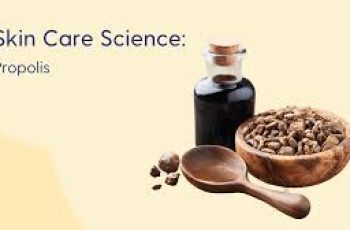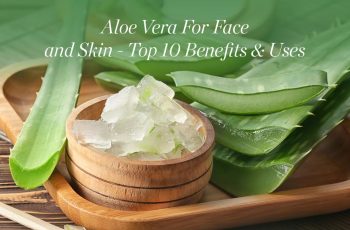
How to Layer Salicylic Acid and Niacinamide Together?
So, you’re wanting to layer salicylic acid and niacinamide together? Well, I don’t blame you as both ingredients have an impressive array of skin benefits. But apart from this, you are also able to use them together easily in your everyday routine. With that in mind let’s find out more about how to layer salicylic acid and niacinamide together.
Quickly, before we dive in, if you are wanting to know what these skin ingredients do for the skin you can check out our dedicated blog posts.
What is Niacinamide and what does it do for the skin?
What is Salicylic Acid and what does it do for the skin?
What goes first salicylic acid or niacinamide?
It is considered the best idea to apply niacinamide before salicylic acid. This is because the humectant traits of niacinamide ensure the natural skin barrier contains the correct levels of water. When the skin barrier is moisturised and healthy it can keep itself protected from exposure to free radical damage. You will also find that when the skin properly hydrated it is able to absorb other ingredients quickly and effectively, ensuring the active ingredients are penetrate further into the lower layers. This makes niacinamide a useful team mate to use with salicylic acid as it can counteract the drying effects that often occurs when using daily salicylic acid in your skincare routine.
What can you not layer with niacinamide?
It is best to avoid layering vitamin C with niacinamide. Both ingredients are rich in antioxidants and are highly beneficial for the skin when used separately. However, when used together their potency is affected leading to both becoming useless and unable to deliver the results they are praised for.
Having said that, if you are wanting to use niacinamide and vitamin C together you can, it just requires you to alternate when applying them to the skin. For example, if you use vitamin C in your morning routine then you can follow this with niacinamide in your evening routine. This allows plenty of time in between applications to reap the rewards without any skin irritation, dryness, or discomfort to the skin.
Can I use niacinamide every day?
Yes, you can, applying niacinamide twice a day on cleansed, clean skin ensure you are rehydrating the skin barrier and helping moisture to be locked into the lower surface.
Water and moisture are usually the first thing your skin loses which not only results in dehydration lines and a lack lustre complexion, but you’ll also find because the skin barrier is weakened any exposure to free radicals, such as pollution, harsh climates and UV rays will damage the skin. Signs of ageing, blemishes, uneven skin tone and texture are a result of this skin damage.
Can salicylic acid be used with niacinamide and Alpha Arbutin?
Yes, you can, don’t let all the complicated names of these ingredient fool you, it is very easy to use them all together.
When using this potent trio together I would suggest firstly applying an exfoliating toner enriched in alpha arbutin to slough away dead skin cells. Follow this with niacinamide to replenish the skin surface and the final step a serum containing salicylic acid which thanks to niacinamide will reach deeply into the pores without any concern with irritation.
Now if you are wondering what Alpha Arbutin is I will briefly explain the benefits of this powerhouse, but if you are wanting to know more you can check out our blog post in our Skin School.
What is Alpha Arbutin?
One of the lesser-known skin ingredients, but certainly not one to be taken for granted! Arbutin is often sourced from plants and fruits such as bearberry, blueberry, cranberry, and wheat. It can work on the outer layers of the skin and combat signs of hyperpigmentation, reduce the appearance of scars, and prevent the production of melanin that causes dark spots to become more pigmented.
You’ll find that Arbutin can be found in two forms, Alpha Arbutin and Beta Arbutin. The latter is often considered too unstable and not used in formulas compared to Alpha Arbutin, which is in fact perfectly safe to use for all skin types.
Should you use niacinamide in the morning or night?
Ideally you should apply niacinamide twice a day, during your morning and night routines. This is the easiest and most effective way of gaining optimal skin results whilst keeping the natural skin barrier hydrated and at its healthiest state.
Niacinamide is generally considered fine to use for all skin types, but if you haven’t used it before and are planning on introducing this ingredient into your daily routine it is best to consult with a doctor or dermatologist first to ensure you and your skin will be happy with this new addition. You can also calm any worries by performing a patch test for 24 hours before applying the formula directly to your skin. Is niacinamide or salicylic acid better for acne? Both ingredients are considered beneficial to use for anyone prone to blemishes and breakouts. Salicylic acid is most effective due to the fact it is oil soluble and able to penetrate the pores and combat excess sebum, dirt, bacteria, and debris build-up that result in frequent blemishes. Although niacinamide performs on the skin very differently to the potent BHA, salicylic acid there is one trait that is unique and highly effective at combating blemish-prone skin. This trait is its ability to regulate the sebum production keeping the barrier balanced, replenished and able to function properly. The bonus is the fact you can use both niacinamide and salicylic acid together resulting in a power couple of combating blemishes and acne. Is niacinamide bad for oily skin? Not at all, as I have already mentioned niacinamide is able to regulate the sebum production of the skin. This helps keep the skin surface balanced with the secretion of oil on the skin surface kept under control and flare-ups in breakouts, spots and blemishes becoming more manageable. Quite often oily skin types tend to use very potent and sometimes very harsh active ingredients on the skin that strip the surface of water and oil. This is when niacinamide steps in and rehydrates and replenishes the skin. I hope that this has cleared up some confusion surrounding how to layer salicylic acid and niacinamide together. Don’t forget you can find me on the Procoal Instagram so please give us a follow.
DQH Knowledge drop: In your 20s, your skin cell turnover decreases. (Cell turnover is a key component in keeping your skin youthful.) You know what else slows down? Your collagen production. Starting in your 20s, collagen decreases by about 1 percent per year. Should you want to prevent fine lines and wrinkles, start by eliminating behaviors that contribute to premature aging. “If it’s bad for you, it’s bad for your skin,” says dermatologist Michel Somenek.
“Cigarette smoking reduces blood flow to the skin and causes premature wrinkling and a dull skin texture. Making the repeated pursed motion to inhale can also cause smoker’s lines. Alcohol and recreational drugs are toxins for the skin that damage its cellular structure and DNA,” Somenek tells us. “The faster you eliminate vices while you are young, the better chance your skin and body have to recuperate.” Also, adopting an anti-aging routine in your 20s is key. After all, the best offense is a good defense. We spoke to Somenek and experts Joshua Ross and Audrey Kunin to find out more.
Keep reading for the best anti-aging products for your 20s, according to skincare professionals.
Sunscreen
“We all know that the sun is the number one cause of skin aging and starting the prevention in your 20s is very important,” Ross says. “The majority of your sun damage won’t start to appear until you’re in your 30s, so don’t wait until you see it surface or you’ll be behind the curve. Stay ahead of it with a good-quality zinc-based sunscreen worn daily.”
Farmacy Green Defense Daily Mineral Sunscreen
An invisible sunscreen with SPF 30, plus botanical extracts meant to protect skin with tons of antioxidants. Bonus: It’s clean and fine to use under makeup.
Bareminerals Complexion Rescue™ Tinted Moisturizer Broad Spectrum SPF 30
Although we recommend you use your SPF and moisturizer separately, we also understand moments when you don’t have time or energy for that extra step. For those times, this bareMinerals moisturizer is a great thing to have on hand.
Vitamin C Serum
“A great introduction to anti-aging is to start with a vitamin C serum in your morning skincare routine,” Ross says. “It’s a powerful antioxidant that will neutralize free radicals and brighten the skin.” He adds that it’s a great way to counteract the effects of the sun’s harmful rays, which, as previously mentioned, are among the biggest causes of premature aging.
Drunk Elephant C-Firma™ Vitamin C Day Serum
The Drunk Elephant C-Firma is a lightweight serum that promises to give skin a glow by combining the brightening powers of vitamin C with ferulic acid, l-ascorbic acid, and vitamin E. The included sodium hyaluronate is meant to replace hydration loss, so you shouldn’t have to deal with any irritation.
Sunday Riley C.E.O. Rapid Flash Brightening Serum
This potent serum is jam-packed with vitamin C (15 percent, to be exact), which means it’s a potential superstar at both brightening skin and dousing it in antioxidants.
Peptides
Using peptides on your skin has many benefits, says Somenek. “The skin barrier is what defends the body against pollution, UV rays, bacteria, and toxins. It can be damaged by several everyday factors. Using topical peptides aids in building a stronger barrier,” he says. “Peptides comprise elastic fibers, which are a type of protein. These fibers help to make skin appear taut and firm. Peptides can also help repair damaged skin, relieve inflammation, and even out skin tone. Some peptides can kill acne-causing bacteria that is common in 20-somethings.”
Kunin agrees, saying, “Peptides are an excellent entry point for supporting collagen.” She recommends looking for face and eye treatments that contain these collagen-boosting powerhouses.
Charlotte Tilbury Magic Eye Rescue Cream
This Charlotte Tilbury super-emollient eye cream has a base of coconut oil and shea butter (read: it’s incredibly hydrating). Botanicals plus peptides are meant to help reduce dark circles and boost collagen, respectively.
This creamy moisturizer serves up potent collagen-boosting peptides and pycnogenol, and antioxidant-rich vitamin C. “Instead of sitting on top of the skin, peptides penetrate the outer layer so they go deep. The ‘signals’ they send tell the cells to produce elastin and collagen, which are needed for youthful-looking skin,” explains Somenek.
At-Home Peel Pads
Remember that skin cell turnover fiasco we talked about earlier? One way to help support it is by exfoliating. “Exfoliation is important to help keep skin fresh and luminous,” Kunin says. She recommends using at-home peel pads as an easy and effective way to exfoliate.
“The goal in your 20s is to fight the slowing pace of cell turnover. It is wise to use products that gently exfoliate, yet still remove oil and other impurities. Products that have Alpha Hydroxy Acids (AHA) or Beta Hydroxy Acids (BHA) are a good choice.”
According to Somenek, you should only exfoliate two to three times a week. “People of all ages are guilty of over-exfoliating and that can be too much of a good thing,” he says.
Dermadoctor Kakadu C Intensive Vitamin C Peel Pad
A few swipes of this Derma Doctor powerful peel pad promise to leave your skin glowing and smooth, thanks to the seven (yes, seven) types of chemical exfoliants, including AHA and BHA. It also contains vitamin C via Kakadu plum extract for added brightening and antioxidant protection.
KEY INGREDIENTS Kakadu plum extract is sourced from the Kakadu plum, a fruit grown in northern Australia. It contains vitamin C, which restores the skin’s natural barrier, increases collagen production, and soothes irritation.
Dr. Dennis Gross Skincare Alpha Beta® Universal Daily Peel Pads
These are the gold standard of peel pads, with a cult following and over 900 five-star reviews on Sephora. They’re easy to use and contain a blend of anti-aging exfoliating acids.
Emollient Night Cream
“In your 20s, you need to start upping the hydration in your skincare routine. You may have been cautious of over-moisturizing because of acne in your teens, but as you enter your 20s, your skin transitions and becomes drier,” Ross says. “I recommend an emollient night cream added into your evening skincare regimen.”
“Twenty-somethings need to make sure that they are not using creams that will clog their pores and cause excess oil production,” says Somenek. Opt for non-comedogenic products.
Cerave Skin Renewing Night Cream
One great choice is the CeraVe Skin Renewing Night Cream, which is a non-comedogenic night cream that leaves skin soft and glowy. It combines the moisturizing powers of ceramides and hyaluronic acid.
RoC Retinol Correxion Max Hydration Creme
“The best night cream ingredients contain retinol, benzoyl peroxide, and/or salicylic acid or hyaluronic acid. The goal is to moisturize, yet remove excess oil,” says Somenek. This Roc Retinol Correxion cream fits the bill as it contains both hyaluronic acid and retinol so it promises to moisturize while also being non-comedogenic.


